





Have you ever looked inside of a cracked walnut? I've often done that, but it never occurred to me to see what it was so obvious: the cross shape between the two kernels.
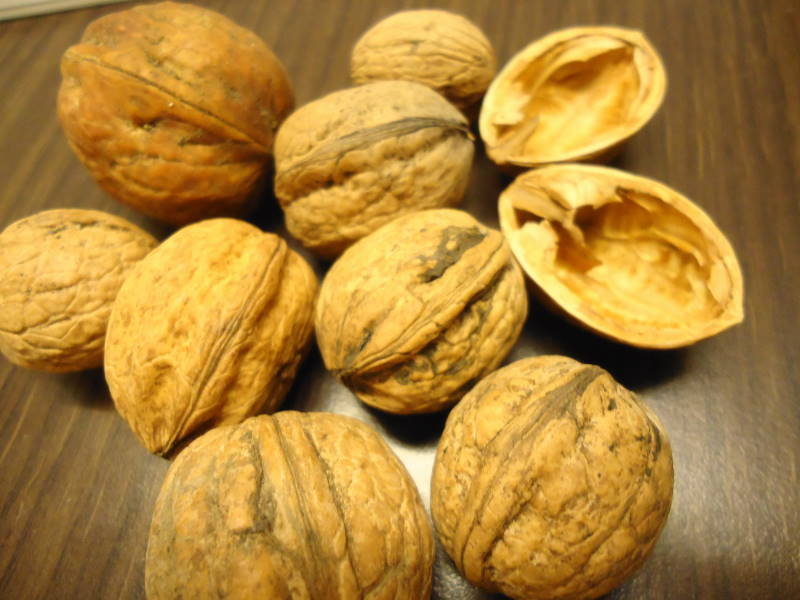
I've always wondered why walnuts are used in all the Romanian traditional foods we cook for special religious feasts. The answer is easy now, after figuring out about the cross shape inside these fruits. Every church or monastery in our country has at least one walnut tree or more growing in their garden. Moreover, walnuts grow in almost every garden in our villages, in the parks, not to mention the huge walnut orchards. I can find walnuts anytime at any store or at the market, packed in bags or not packed, shelled or not. I can buy any quantity I want, although the price has gone much too high lately. However, the price is lower than of the other nuts, thus it is more convenient to buy walnuts.
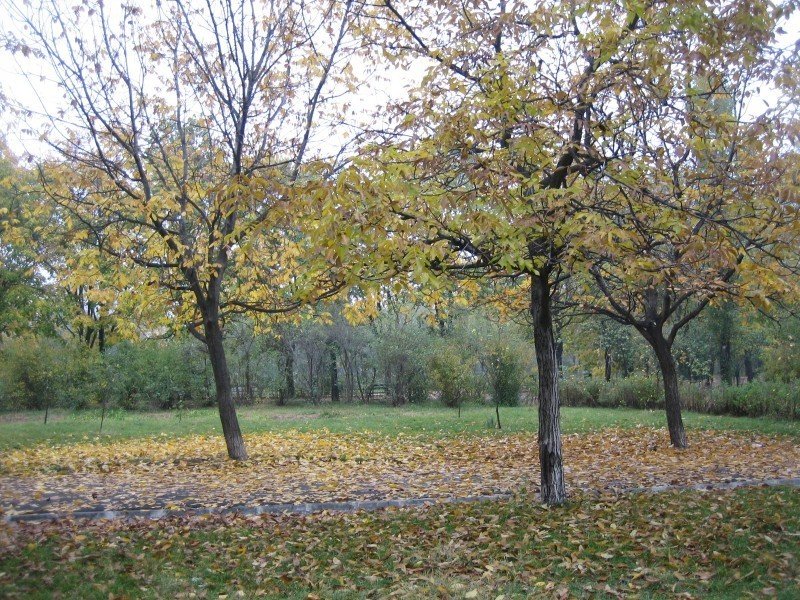
But this wasn't always the case. There was a time when walnut trees were frequently cut down for their valuable wood, especially the old ones. Since 1954, they have been protected by a special law and can't be cut down without a special authorization and only in certain circumstances. Thanks to this law, many new walnuts were planted and walnut cultivation spreaded all over our country.
Walnut is the fruit of the Juglans regia, also called the English or Persian walnut, a nut tree in the Juglans genus, Juglandaceae family. Walnuts are round, single-seeded stone fruits, covered in a green husk which cracks when the fruit ripens, revealing the brown stone fruit. The two seed kernels are enclosed inside the hard shell, separated by a hard partition. Yet, the two halves are in fact one because they bond together through their middle part, in a cross shape. The kernel can be pulled out only by cracking the shell with a hammer or nutcracker. Kernels are covered with a thin brown seed coat which contains antioxidants, in their raw form. If roasted, the antioxidant properties are lost. Walnuts are a nutrient dense food, containing protein, dietary fibers and fat.[1]
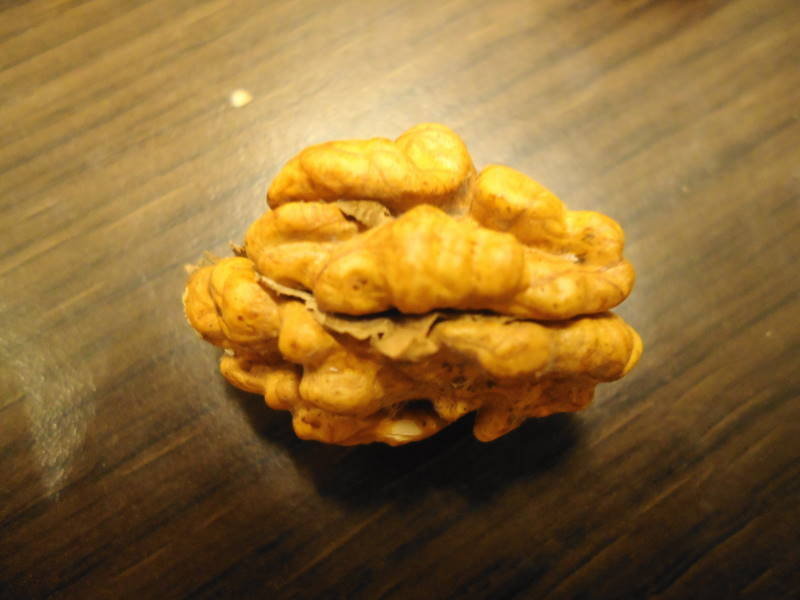
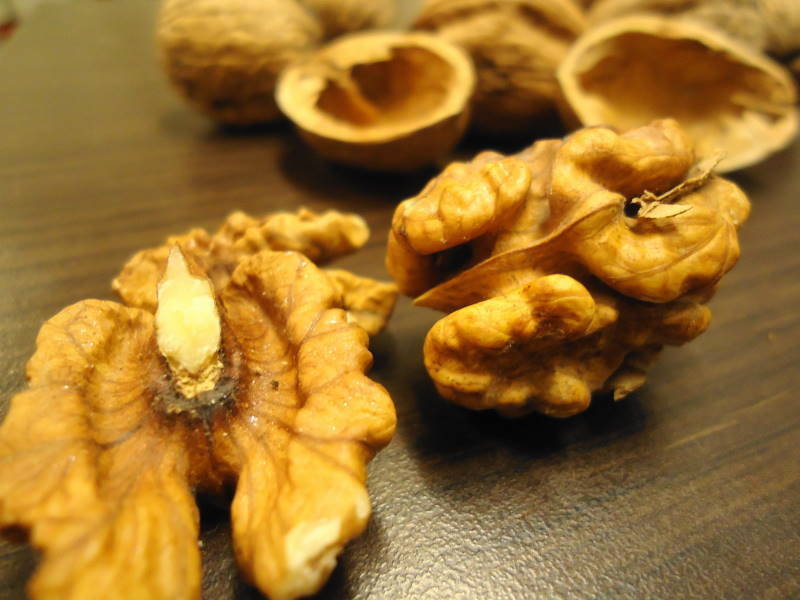
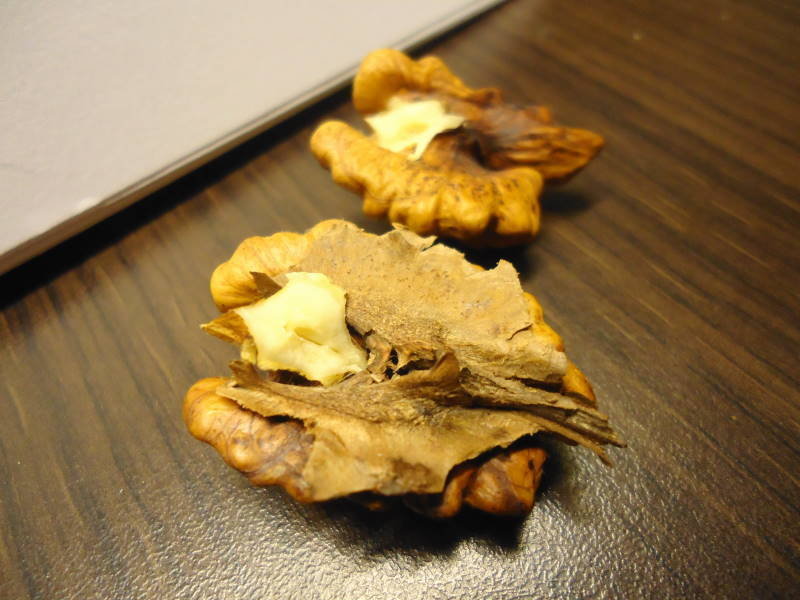
Raw walnuts have medicinal properties, due to the omega3-fats, amino acid l'arginine, copper, manganese, molybdenum, biotin, they contain. Only one quarter cup of walnut kernels provides the daily recommended value of omega3 fats.[2]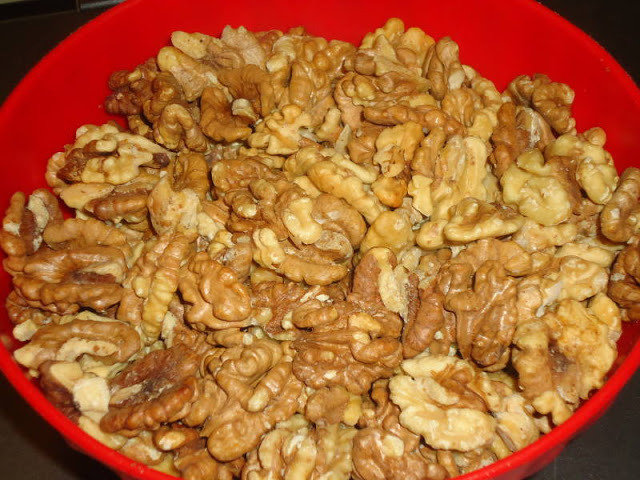
I am, as are all Romanians, very religious. I respect and follow all our traditions, especially those of almsgiving. We believe in life after death, so we give away for alms part of our meals, on special occasions, for our deceased relatives. Besides bread, meat or cheese and fruits, we cook some traditional desserts on our special religious feasts, of which we first give away for alms and then eat with our family. All traditional desserts contain walnuts, so no matter what, I must have as many as I need for cooking the traditional desserts. The most challenging dessert is the dough cake with walnut filling ("cozonac" in Romanian), which I bake at Christmas and Easter. Americans call it a nut roll.
Another sweet meal I cook with walnuts, on several occasions each year is "coliva", a sort of barley porridge.
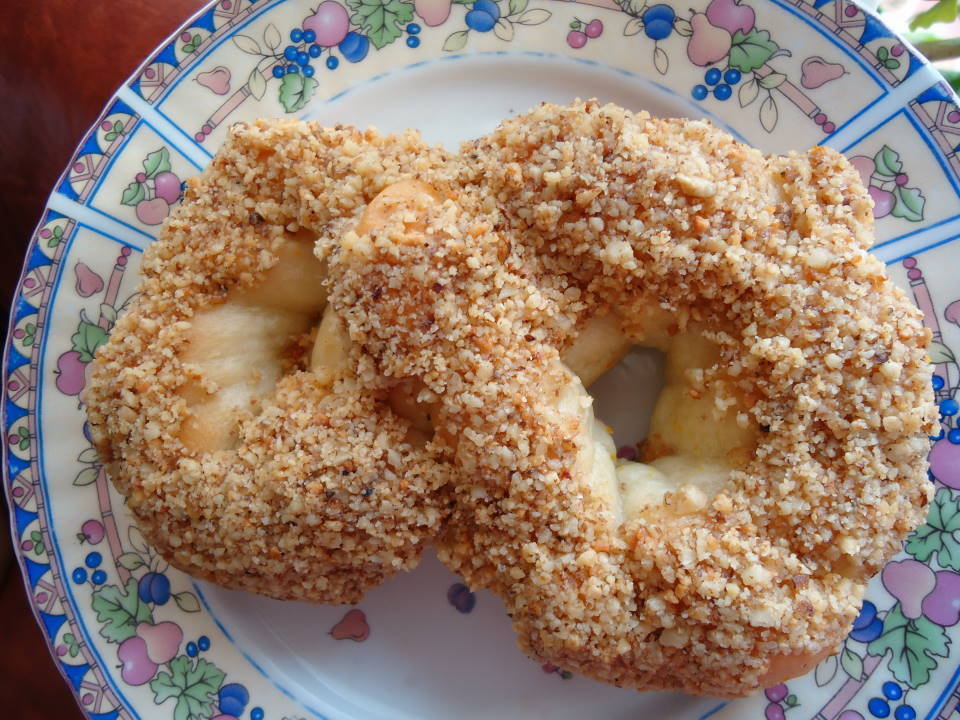 Last, but not least, are the most delicious cakes I bake on March 9, when we celebrate the Forty Saints Martyrs of Sebaste. This is a very important religious celebration of forty soldiers in the Roman army, which were killed by drowning in a lake, because they didn't give up on their Christian beliefs. In their honor, tradition says we should cook and give away for alms some special and delicious eight-shaped cookies called "mucenici" (pronounced moocheneech) in Romanian, which means "martyrs". The figure-8 shape is a symbol for the human figure, thus symbolizing the Saints. Mucenici are cooked differently, depending on which of our geographical region are made. In the Moldavia region--in the eastern part of Romania--people bake figure-8 shaped dough cakes, also called "Mucenici Moldovenesti" or "The Little Saints". In the Muntenia region--in the southern part of Romania--people make small pasta dough figure-8s that are boiled in a sweet soup, like noodles. The soup symbolizes the lake where the martyrs died. Even though I live in the Muntenia region, I make both the Moldavian Mucenici and the little noodle saints, because we appreciate both in our family. I need about two pounds of ground walnuts for all these "mucenici". If any of you would like to try the recipes of our Little Saints, here they are:
Last, but not least, are the most delicious cakes I bake on March 9, when we celebrate the Forty Saints Martyrs of Sebaste. This is a very important religious celebration of forty soldiers in the Roman army, which were killed by drowning in a lake, because they didn't give up on their Christian beliefs. In their honor, tradition says we should cook and give away for alms some special and delicious eight-shaped cookies called "mucenici" (pronounced moocheneech) in Romanian, which means "martyrs". The figure-8 shape is a symbol for the human figure, thus symbolizing the Saints. Mucenici are cooked differently, depending on which of our geographical region are made. In the Moldavia region--in the eastern part of Romania--people bake figure-8 shaped dough cakes, also called "Mucenici Moldovenesti" or "The Little Saints". In the Muntenia region--in the southern part of Romania--people make small pasta dough figure-8s that are boiled in a sweet soup, like noodles. The soup symbolizes the lake where the martyrs died. Even though I live in the Muntenia region, I make both the Moldavian Mucenici and the little noodle saints, because we appreciate both in our family. I need about two pounds of ground walnuts for all these "mucenici". If any of you would like to try the recipes of our Little Saints, here they are:
Little Moldavian Saints-Moldavian Mucenici
Ingredients
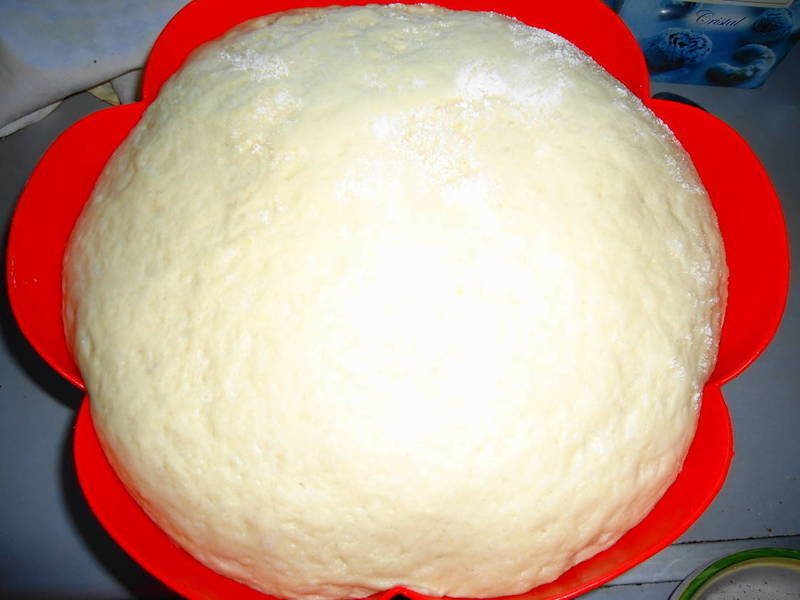
For the dough
2 cups all-purpose flour(1/2 Kg)
0.6 ounce compressed fresh yeast (25g)
1/2 cup melted butter (150g)
1 teaspoon salt
1 cup milk (250 ml)
2 eggs
2 tablespoon granulated sugar
1 teaspoon of each vanilla and rum flavoring
For the syrup
1/2 cup granulated sugar (150g)
1/2 cup water (150 ml)- 1/2 zest from 1 orange
1 teaspoon of each vanilla and rum flavoring
For the topping
1 cup honey (250g)
2 cups ground walnuts (500g)
Make the dough first. Mix the yeast with a tablespoon of sugar, until it gets liquid, then add a spoon of flour and stir well, like beating. Cover it with a napkin-cloth and put it in a warm place to rise, until foamy, for 15 minutes.
Sift and measure the flour into a large bowl. Make a well in the flour, pour the warm milk, eggs, sugar, butter, vanilla and the grown yeast into the well. Knit the dough well, then cover with a napkin-cloth and allow dough to rise in a warm room for 1 hour or until doubles volume. Do not set bowl on radiator or in a hot place. Keep away from draughts. Allow dough to rise until doubled in bulk.
I use my food processor to make the dough. Pour the flour into the processor's larger bowl and add all other ingredients, including the fresh yeast, crumbled. I turn on the food processor for 1 minute, while pouring the warm milk and melted butter, until it forms a ball inside the bowl. Then put the dough in a large bowl, to double vin olume, as said above.
TIP: For bread, mucenici or other simple doughs, if kneaded in the cooking machine, fresh yeast will get activated without the previous foaming, just crumbled.
Meanwhile, preheat the oven. When the dough has doubled in volume, divide it into several equal parts, about 12 to 14. Take each part, make 2 finger thin ropes. Press the two ropes at one end, twine them together, press the other end and give it the shape of the figure 8. Stick very well the ends, by pressing.
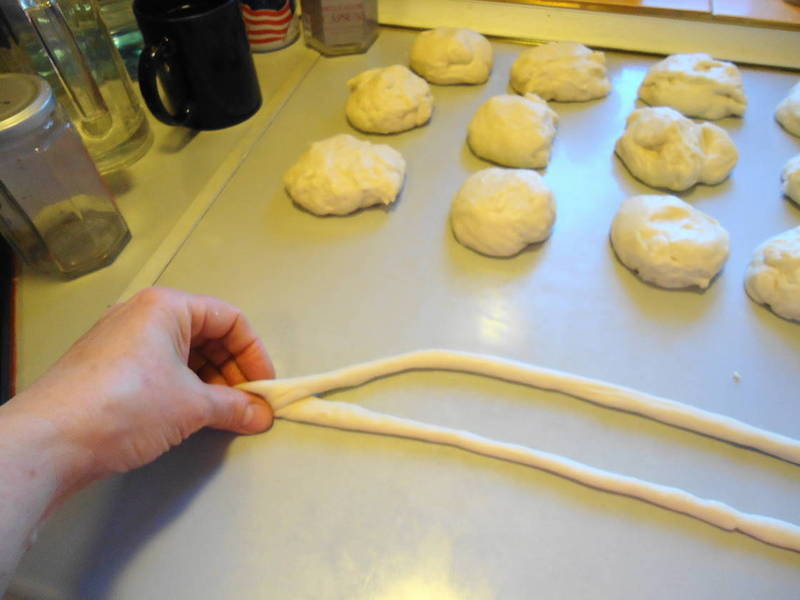
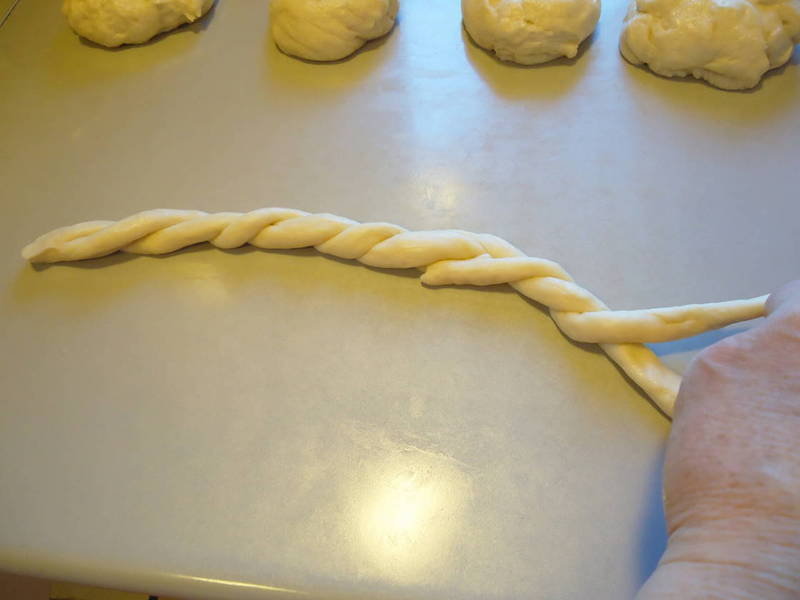
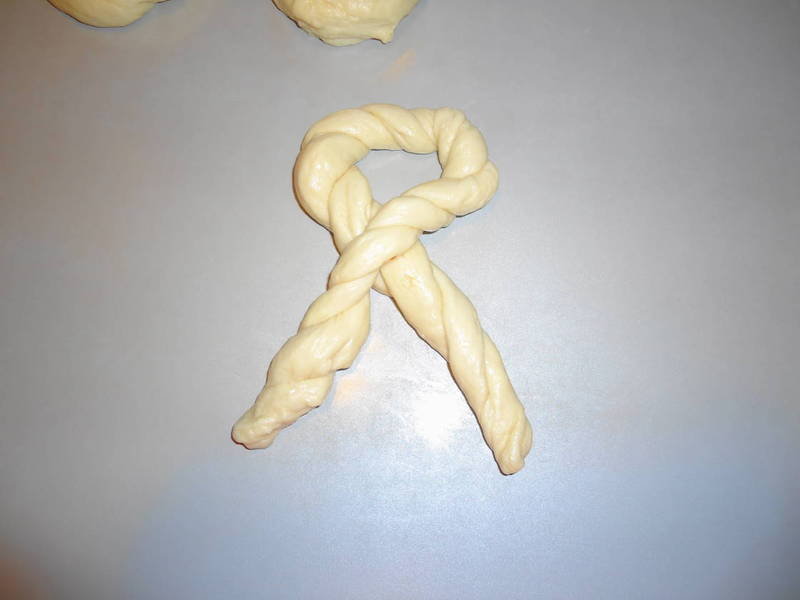
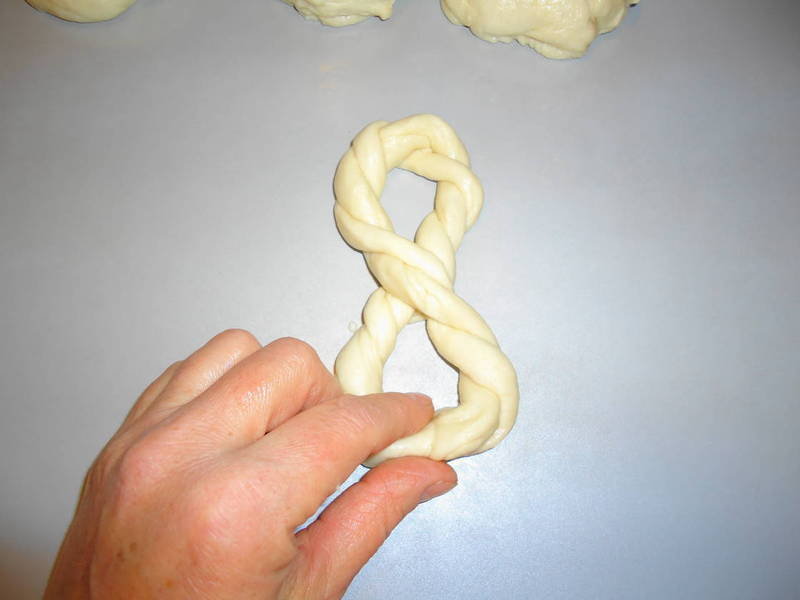
Then put the cakes in a pan and let them double in volume, for another 20 minutes. Bake into the preheated oven at 180C (350F) for 30 minutes, until golden-brown. Meanwhile make the syrup: boil together the sugar, water and orange zest. Let cool. When the mucenici are ready, take them out of the oven and, immediately, dip one by one into the syrup for a few seconds, on each surface, to get moist.
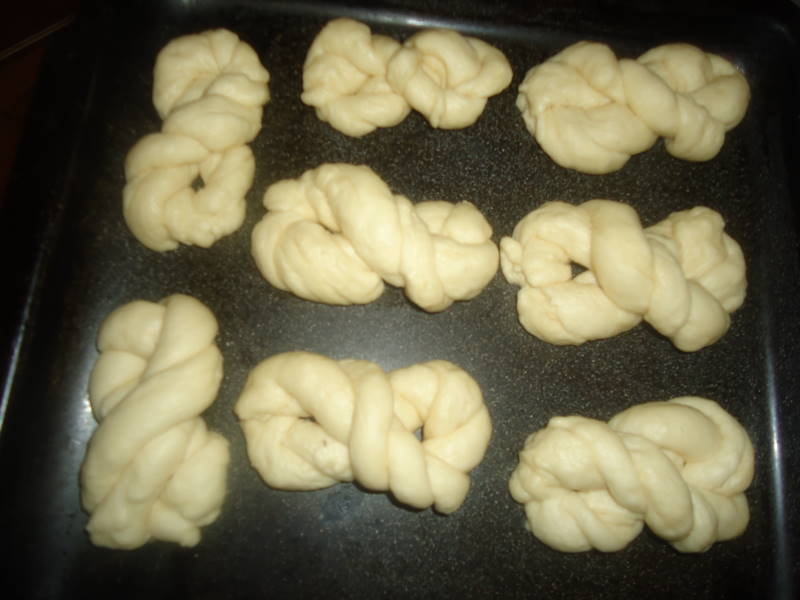
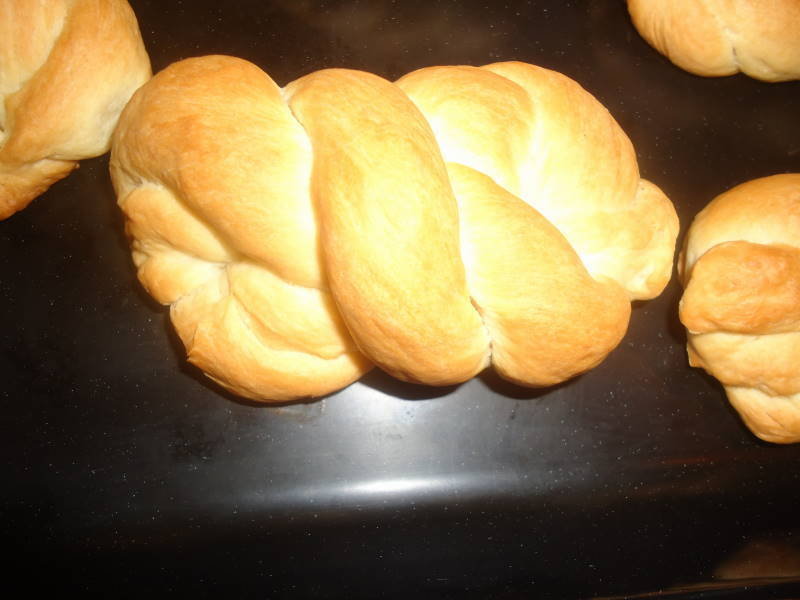
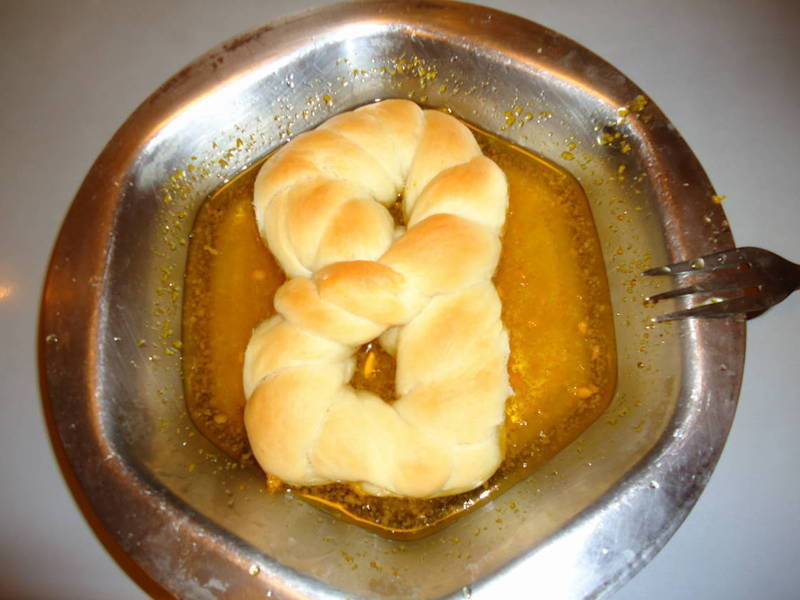
Arrange them on a tray and let cool, then cover each with honey and roll it in ground walnuts.
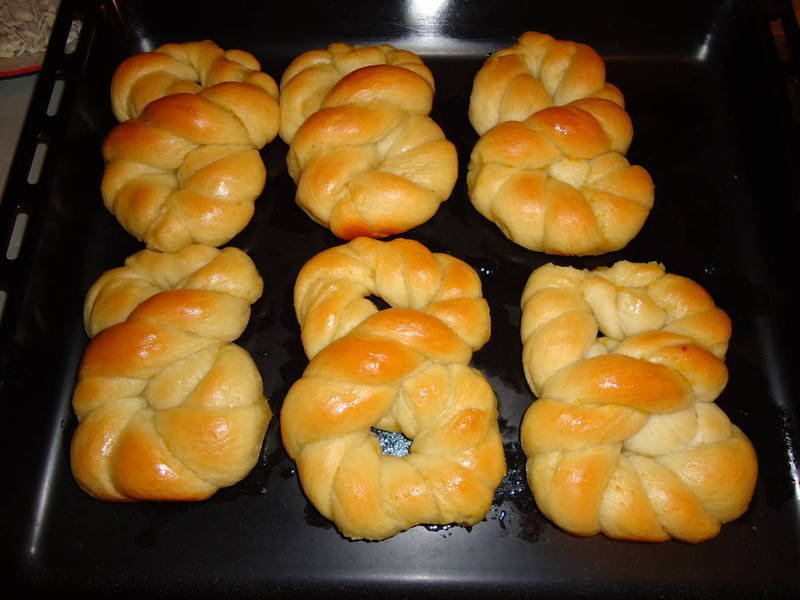
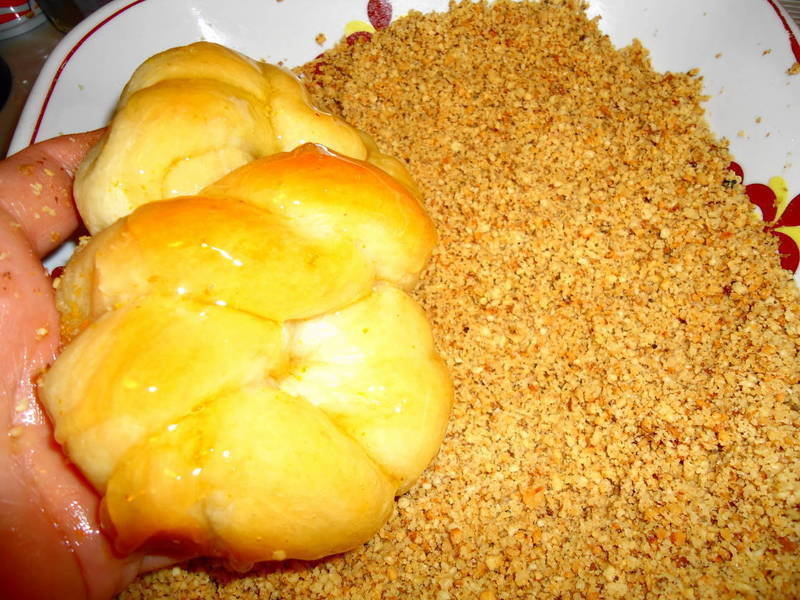
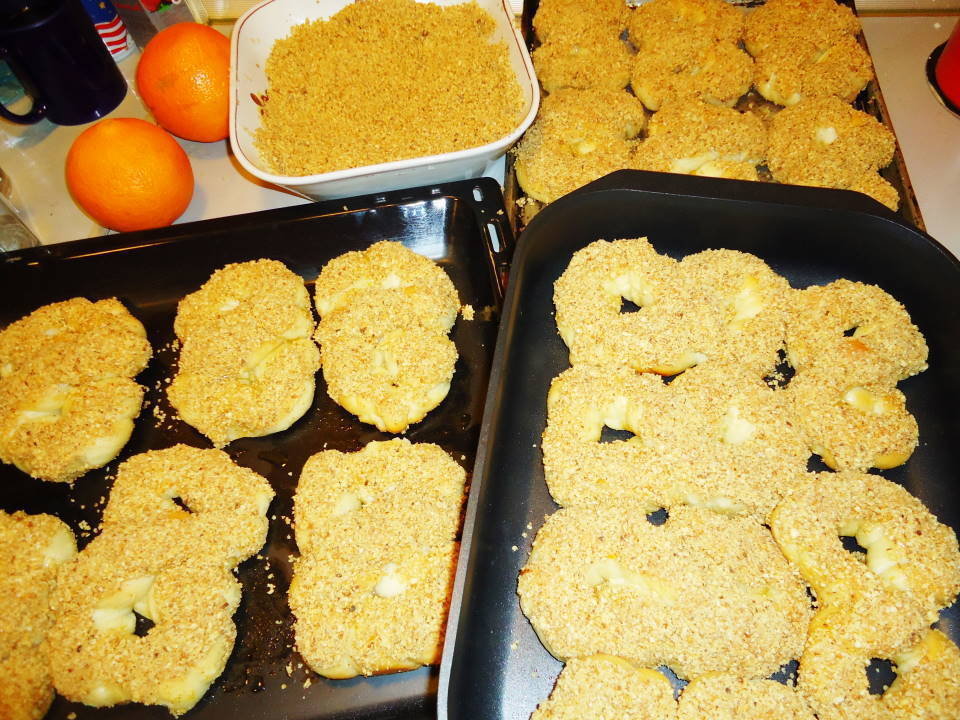
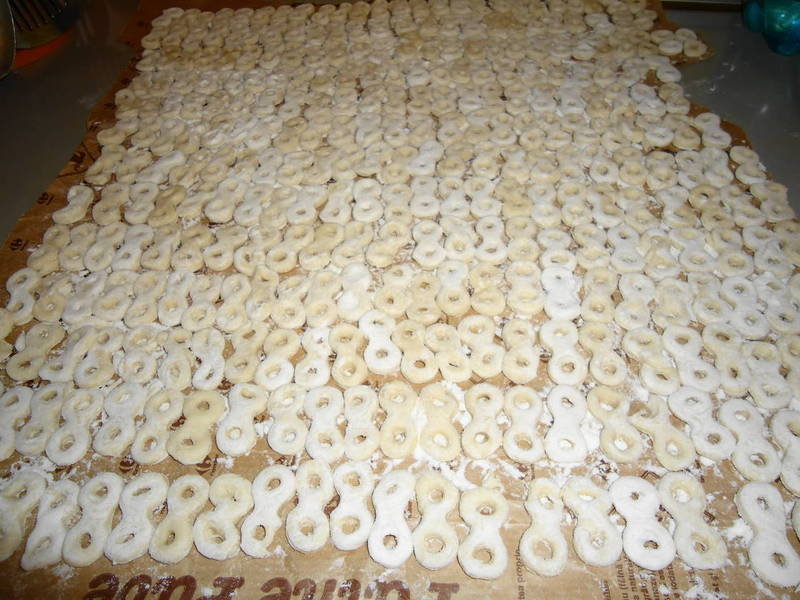
Little Saints Soup (Mucenici Soup)
Ingredients for the 'mucenici'
1 cup flour
1/4 teaspoon salt
1/4 cup tepid water
1/4 teaspoon baking powder
You can also use any other small pasta shapes you can buy from the store.
For the soup
3 quarts water
1 cup sugar, at your taste
1 cup grounded walnuts
2 teaspoons cinnamon powder
1 pinch of lemon and orange zeast
vanilla and rum flavoring
Mix the flour, baking powder, salt and water in a mixing bowl, make an elastic dough, rather tough, and knead it for a few minutes. If it sticks, add more flour. Shape dough into a ball, cover and let stand at room temperature for 1 hour. In Romania, we have a special 8-shaped instrument for making the little saints.I roll the dough on the table, about 5 mm (0.2 inches) thick, then cut out the eights.
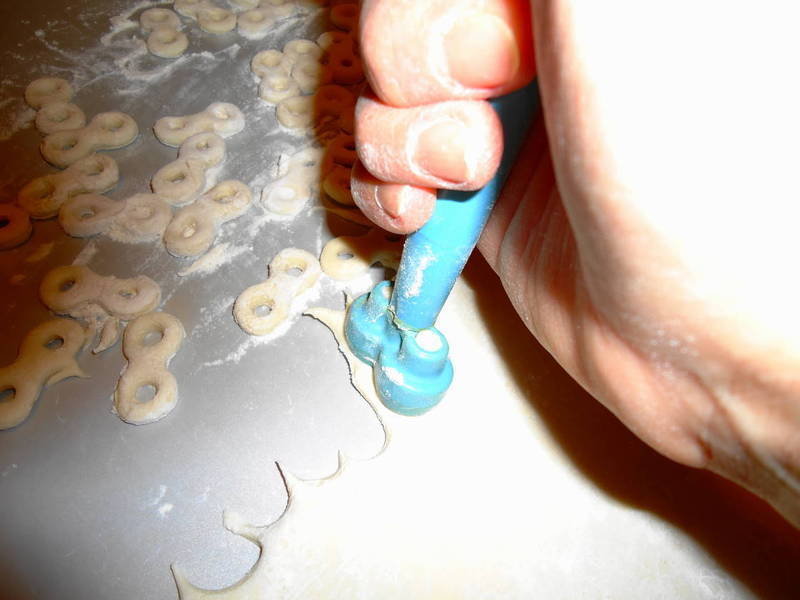
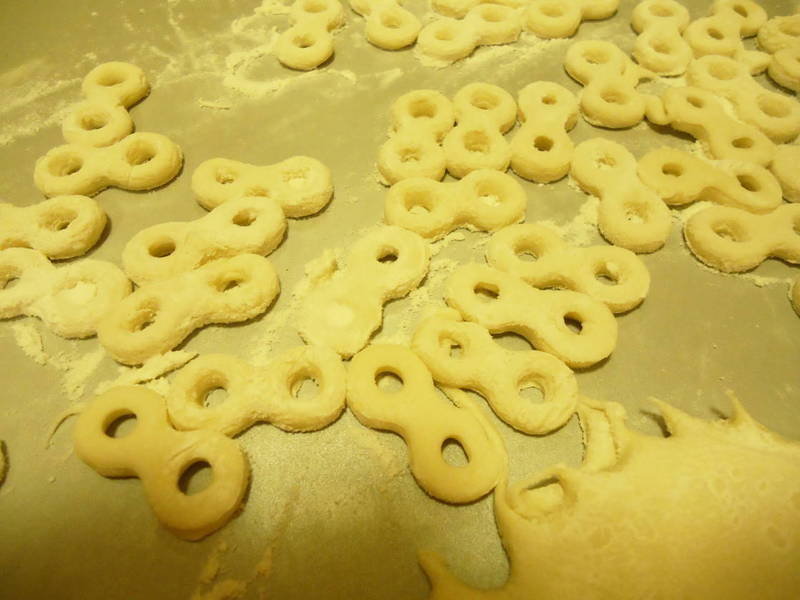
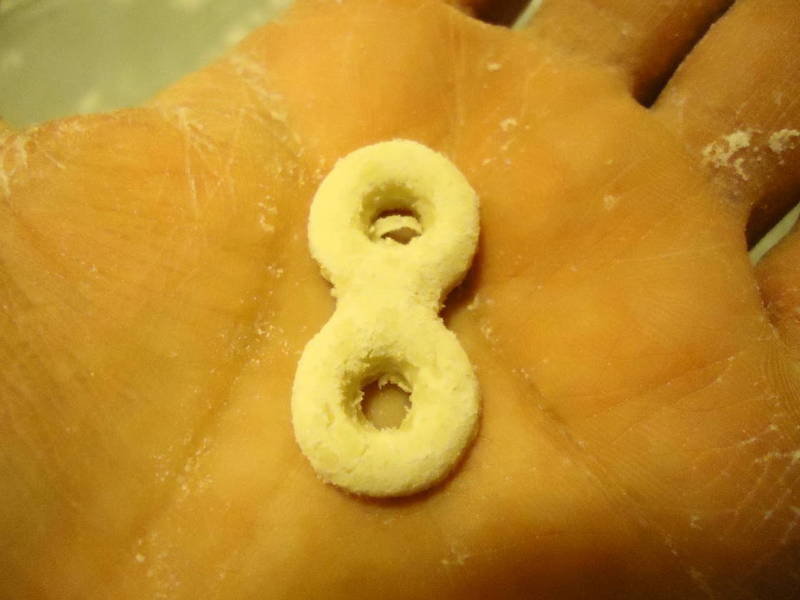
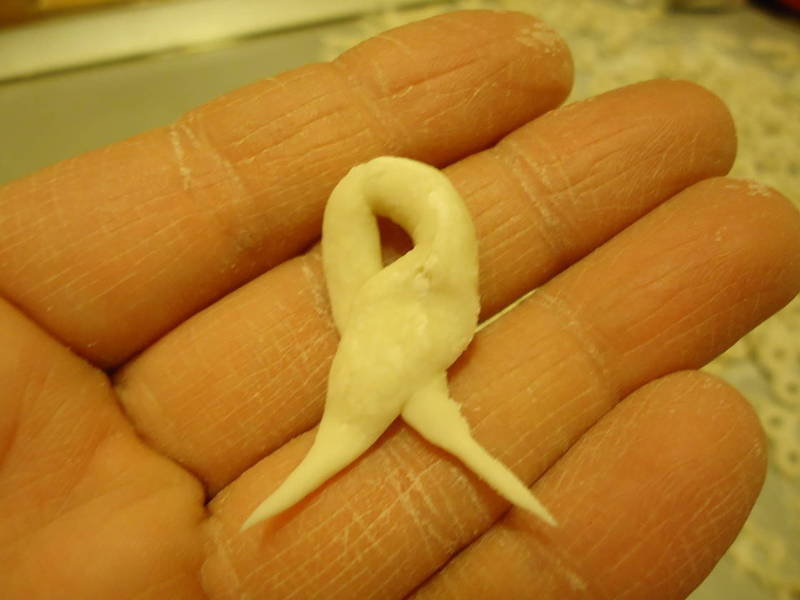
But the instrument is rather new, it didn't exist when I was a child, so my mom used to make mucenici by molding them with her fingers. She would pinch small pieces of dough (as it goes between 3 fingers), roll it between her hands into a thin rope, about 1/4 inch (6 cm) long, which she would wrap arround her finger. She would pinch the edges together, to form a ring, then twisted the middle to form an 8. Most of the times, though, she made mucenici with a fish shape, also a symbol of Christianity. Flour hands and work surface as nedeed. As she finished forming each little figure-8 (mucenic), she would place it on a flour-covered pan or cooking paper. Let dry for a few hours (better a day before cooking). Fill 3/4 of a 3 liters pan with water, add a teaspoon of salt and bring to a boil.
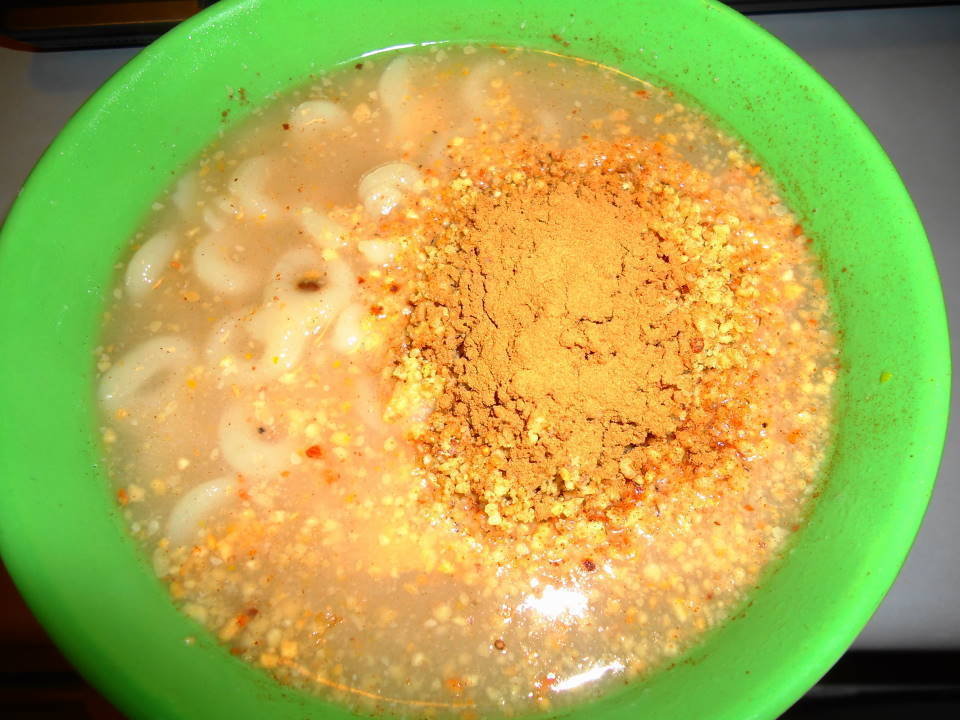 When it begins to boil, drop the pasta shapes into the liquid, bring to boil again, then lower the heat to moderate. Stir gently to be sure the pasta shapes don't stick on the bottom of the pot, then let boil to low heat for half an hour, if they are homemade. Otherwise, boil them according to the instructions on the package. If using homemade pasta shapes, they will normally be cooked once all are floating from the top of the water to the bottom. Add sugar to taste, bring to boil again over high heat, stirring occasionally until the sugar is dissolved. Turn off the heat and let cool. Add cinnamon powder, the lemon and orange zest, vanilla and rum flavoring.
When it begins to boil, drop the pasta shapes into the liquid, bring to boil again, then lower the heat to moderate. Stir gently to be sure the pasta shapes don't stick on the bottom of the pot, then let boil to low heat for half an hour, if they are homemade. Otherwise, boil them according to the instructions on the package. If using homemade pasta shapes, they will normally be cooked once all are floating from the top of the water to the bottom. Add sugar to taste, bring to boil again over high heat, stirring occasionally until the sugar is dissolved. Turn off the heat and let cool. Add cinnamon powder, the lemon and orange zest, vanilla and rum flavoring.TIP : Avoid using the white part of the lemon and orange, which will make the soup bitter.
Stir 1/4 of the ground walnuts with 1 to 2 spoons of cold water until moistened, then add into the soup pot and stir well. The soup will turn white and thicker. You can transfer the soup into a large bowl and place it in the refrigerator until cool. Serve in bowls, with a spoonful of ground walnuts and cinnamon powder on top.
[1] - http://en.wikipedia.org/wiki/Walnut
[2] - http://articles.mercola.com/sites/articles/archive/2014/05/19/7-walnuts-benefits.aspx
Copyright © www.100flowers.win Botanic Garden All Rights Reserved